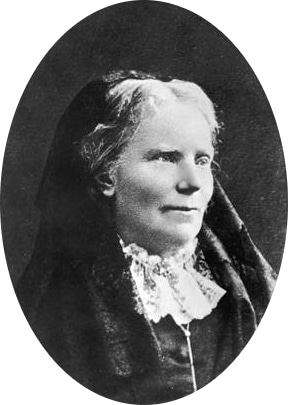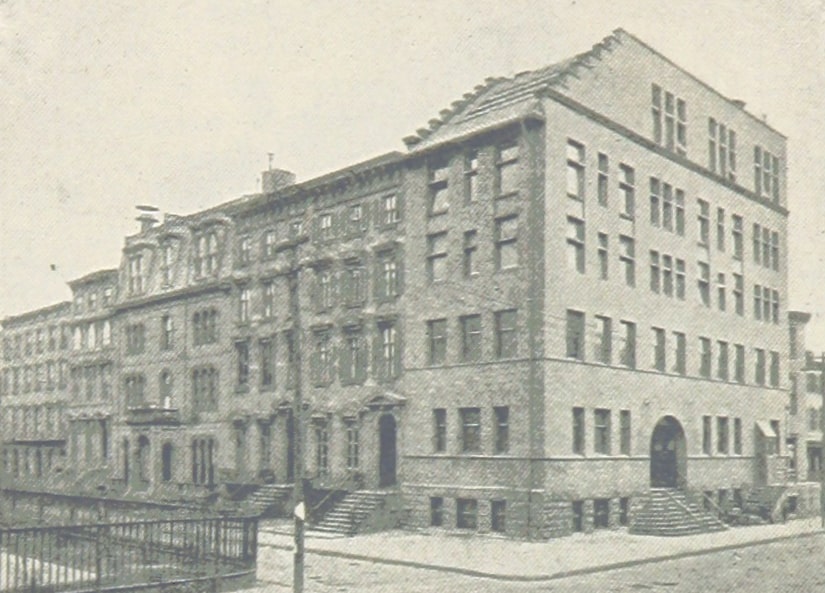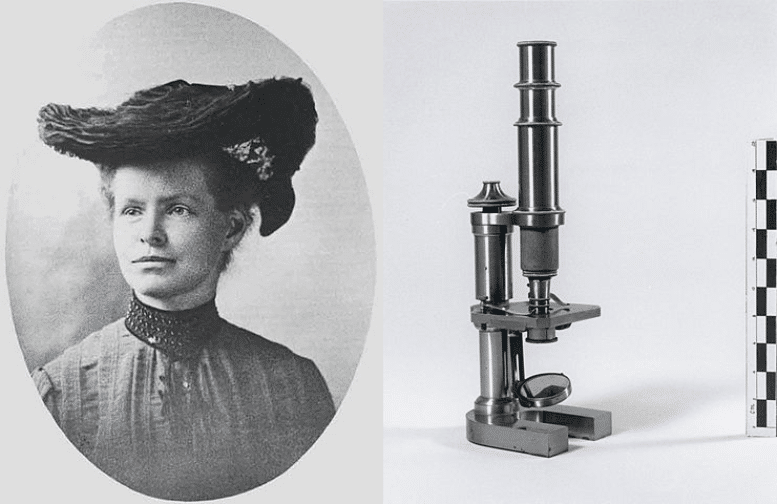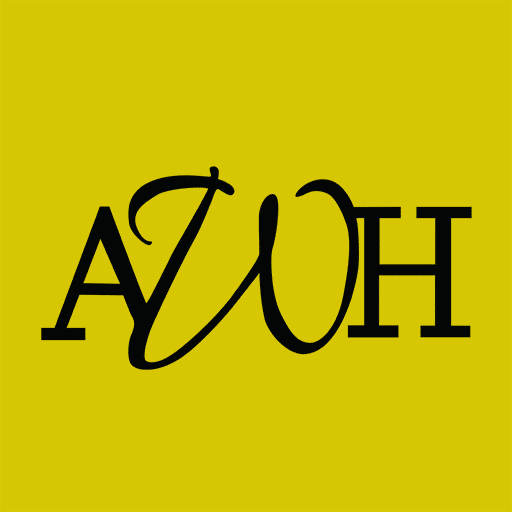Firdst Black Woman to Get Medical Degree 1884
Elizabeth Blackwell, M.D. (1821-1910), was the first woman to graduate from medical school in the United States and is often thought of as America's first woman doctor. A dedicated public health advocate, social reformer, and prolific writer, Blackwell changed the course of modern medicine, founding hospitals and medical colleges for women in the United States and England, pioneering in preventive medicine and infection control, and breaking prejudicial barriers against women in medicine on two continents.

Elizabeth Blackwell was born in England, near Bristol on February 3, 1821, the third of nine children, at a time when women had no access to higher education or the professions, and married women had no legal identities separate from their husbands. Elizabeth's early home life was rich and satisfying for her and her siblings. Both boys and girls were tutored at home. Meals provided spirited discussions for the children as well as their parents' frequent dinner guests, anti-slavery crusaders, missionaries, and political and religious leaders.
Nine years later everything changed. Life in Bristol became unstable. Cholera swept through the city. Riots began to break out and factories were burned. When Elizabeth's father Samuel's sugarcane business floundered, he decided to move his family to America. They settled in New York City in 1832. Eleven year old Elizabeth continued her studies, reading everything, learning French and German, and studying music and art.
Despite his best efforts, Samuel never regained the financial prosperity they had known in England. The family dismissed their servants and economized but found it necessary to start over once again and moved to Cincinnati, Ohio six years later. Three weeks after their move to Ohio however, Samuel died unexpectedly from biliary fever caused by a tick bite, leaving his family alone and impoverished.

To support the family, Elizabeth, then 18, her mother Hannah, and two older sisters opened a private school: The Cincinnati English and French Academy for Young Ladies. It became the primary source of income until the boys were old enough to go into business two years later in 1842. At that point Hannah closed the school and Elizabeth tutored students privately. When she received an invitation to teach in Henderson, Kentucky, she left home for the first time. Though she enjoyed her students, Elizabeth found the realities of slavery and racism untenable, and she refused to accept the attitudes of the southern families paying her wage. She resigned her position and returned to Cincinnati within the year.
While she enjoyed a full and active social life, she wrote in her diary that she felt "the want of a more engrossing pursuit than the study of music, German, and metaphysics." When she visited a friend dying of cancer, Mary Donaldson told her how difficult it was to have exams and treatments performed by a male doctor. She suggested that since Elizabeth loved to study, she should study medicine.
Though initially repelled by the idea of studying anything connected with the human body, Elizabeth found herself constantly returning to the idea. She said, "Other circumstances forced upon me the necessity of devoting myself to some absorbing occupation. I became impatient of the disturbing influence exercised by the other sex. I had always been extremely susceptible to this influence." Because her family did not have the financial means to provide for her, she either had to marry or work. The challenge of becoming a woman physician intrigued her, and she thought the pursuit of medical training would be the deterrent she sought to a stifling marriage.
Since she had no idea how to become a physician, Elizabeth consulted several doctors known to her family, as well as close family friend Harriet Beecher Stowe.

They said it was a good idea, but impossible suggesting there were strong prejudices and too many obstacles to overcome. It was commonly assumed women were morally unfit to practice medicine, that they were ignorant, inexact, untrustworthy, un-businesslike, lacking in sense and mental perception, and contemptuous of logic. Not to mention immodest. There was no education available to women and in addition, medical school was expensive.
Elizabeth reasoned that if, as others advised, the idea had value, then there would be a way to do it. She wrote,
The idea of winning a doctor's degree gradually assumed the aspect of a great moral struggle, and the moral fight possessed immense attraction for me. Elizabeth Blackwell
In 1845, at age 24, Elizabeth decided she was going to get a medical education. To accomplish her goal, she took another teaching position to save the $3000 necessary for tuition and expenses. She found a job teaching music at an academy in Asheville, North Carolina. She lodged with the Reverend John Dickson, who had been a physician before becoming a clergyman. In her free time, Elizabeth studied the medical books in Dickson's library. When the academy closed unexpectedly a year later, Elizabeth found work at a boarding school in Charleston, South Carolina and lodged with John Dickson's brother, Dr. Samuel Dickson, a prominent Charleston physician.
Within two years, Elizabeth achieved her financial goal. The summer of 1847, Elizabeth sailed to Philadelphia because it was considered to have the best schooling. She applied to the four best medical colleges in Philadelphia and was rejected. She recorded in her diary that interviews with school officials were disappointing.
While she continued to seek admission, Elizabeth began to study anatomy privately with a doctor sympathetic to her. She also found support in Dr. Joseph Warrington who allowed her to visit his patients, attend his lectures, and make use of his library. He spoke to various friends on her behalf. Though she eventually applied for admission to every medical college in Philadelphia and New York City all twenty nine schools rejected her. Refusing to give up, she then wrote to a number of lesser known colleges, including Geneva Medical College in western New York state.

After her acceptance at Geneva Medical College, she found out the college administrators let the students decide whether to allow a woman admission or not. The young men thought it was a good joke and said yes. She started classes in November facing prejudice and loneliness. A woman studying medicine was such an aberration, townspeople would stop and stare at her. They thought her insane, immoral, or both. She stayed strong in herself and kept sight of her goal. Even though she joined the class midterm, she caught up and became the head of her class.
In the summer between school terms, Elizabeth returned to Philadelphia to work at the Blockley Almshouse where a typhus epidemic had broken out. There, she gained the clinical experiences she wanted, and her increasing interest in the disease later became the subject of her thesis at Geneva.
In January, 1849, at the age of 28, Elizabeth Blackwell received her medical degree, at the top of her class. Though she had received the necessary training and credential, she was banned from practicing medicine by the medical community. Blackwell decided to continue her studies in Europe, only to find the hospitals of England closed to her as well.
After a few months, she traveled to the Paris hospital, La Maternite, where she was admitted under the condition she be treated as a student midwife, not as a physician. She found support in a young resident physician who provided mentoring throughout her training in obstetrics. Her study was cut short when she contracted purulent ophthalmia resulting in one eye being removed, preventing her from fulfilling a dream of becoming a surgeon.

Elizabeth returned to England in 1850 and was accepted as an intern at St. Bartholomew's Hospital, through the help of a cousin. During this time, she led an active social life, becoming friends with Anne Isabella Byron, the widow of Lord Byron. She also met young Florence Nightingale, just before she defied her family to study nursing.
A year later Elizabeth returned to New York City determined to open her own practice. She found no male doctor would accept her as an associate. No landlord in the city would rent space. Eventually she rented a room in Jersey City. She hung out her shingle and waited, but very few patients came. To increase business, Elizabeth began giving lectures on women's health. She wrote articles on the importance of good hygiene as well as the importance of exercise and physical education for girls in school.
After her sister Emily received her medical degree in 1853, she joined Elizabeth. Together they opened a clinic in the slums of New York City for women and children. Elizabeth wrote, "my working powers were more than doubled by the arrival of my sister…who became my partner and able co-worker." They were later joined by Dr. Marie E. Zakrzewska, a trained midwife from Berlin who had done her pre-med studies with Elizabeth before graduating from Cleveland.
In 1857, the clinic was closed and the three women opened The New York Infirmary for Women and Children. This facility still exists as the Beekman Downtown Hospital. It not only served the poor but provided a training facility and positions for female medical and nursing students. Dr. Zak served as chief resident and Dr. Emily as the chief of surgery.

During this time, Elizabeth adopted an orphan Katherine Barry, who became a lifelong companion as well as an adopted daughter. Although Elizabeth provided for Barry's education, she never allowed the girl to develop her own interests, or make her own friends. Rather shy and self conscious about her slight deafness, Barry dedicated herself to Elizabeth's welfare, staying with her all her life. Elizabeth recorded an incident she found amusing, "She had always been accustomed to call me 'Doctor.' On one occasion she was present during the visit of a friendly physician. After he was gone, she came to me with a very puzzled face, exclaiming, 'Doctor, how very odd it is to hear a man called Doctor!'"
Elizabeth once again travelled to England in 1858 to fundraise and increase awareness for women in the medical field. She returned a year later after becoming the first woman to have her name entered on the Medical Register of the United Kingdom. When the Civil War broke out in 1861, Elizabeth contributed by training and organizing a unit of female field doctors and nurses.
Seven years later she founded the Woman's Medical College adjacent to the New York Infirmary. It was the first American medical school for women. Dr. Rebecca Cole, the first American black woman to become a doctor, was one of the first graduates of the Women's Medical College. It was one of the first medical schools in America to require four years of study.
Dr. Emily Blackwell took over management of the college which freed Elizabeth to return to England and establish a medical college for women there. Elizabeth said,
The first seven years of New York life were years of very difficult though steady, uphill work. It was carried on without cessation and without change from town, either summer or winter. Patients came very slowly to consult me. I had no medical companionship, the profession stood aloof, and society was distrustful of the innovation. Insolent letters occasionally came by post, and my pecuniary position was a source of constant anxiety. My keenest pleasure in those early days came from the encouraging letters received from the many valued English friends who extended across the ocean the warm sympathy they had shown in London. They strengthened that feeling of kinship to my native land which finally drew me back to it. Elizabeth Blackwell
She sailed in 1869. Dr. Zakrzewska soon left to open a woman's hospital in Boston.
She said, "In 1869, the early pioneer work in America was ended. Our New York centre was well organised under able guidance, and I determined to return to England for a temporary though prolonged residence, both to renew physical strength, which had been severely tried, and to enlarge my experience of life, as well as to assist in the pioneer work so bravely commencing in London, and which extended later to Edinburgh."
She opened a private practice and enjoyed an active social life exchanging conversations with leading artists and social reformers. She helped form the National Health Society of England in 1871 and three years later also participated in the creation and opening of the New Hospital and London School of Medicine for Women. Her health, however, gradually declined. In 1873 she was forced to spend time in Italy to recover the strength lost in several bouts of "atrocious biliary colic." She curtailed her private practice, but two years later accepted a position of Professor of Gynecology at the London School of Medicine for Woman.
In 1879, Elizabeth moved to the village of Hastings, on the English Channel. She gave up private practice and began a period of prolific writing on issues she felt needed reform. These included medical education and ethics, preventative medicine, sanitation, family planning, and women's rights. She wrote her autobiography, "Pioneer Work in Opening the Medical Profession to Woman" which was published when she was 74. Other works include "The Religion of Health" (1871), "Counsel to Parents on the Moral Education of Their Children" (1878), "The Human Element in Sex" (1884), and "Essays in Medical Sociology" (1902). She received a steady stream of visitors, corresponded vigorously, and actively wrote for publication.
In 1907, at age 86, Elizabeth took a serious fall from which she never recovered. She died on May 31, 1910 at her home, after suffering a stroke. She was buried in St. Mun's churchyard at Kilmun on Holy Loch in the west of Scotland.
At the time of her death, America had over 7,000 practicing women physicians who had graduated with a medical diploma. Though Dr. Elizabeth Blackwell was not the first woman to practice medicine in America, she was the first to receive the same training as every other medically educated physician. Through her hard work, persistence, and determination, she achieved her personal goals and worked tirelessly to open doors for women following her. Elizabeth was a strong-willed woman who relied on inner counsel to manifest her dreams and to help others to do the same. She is said to have had a strong personality, and was often quite acerbic in her criticism of others, especially of other women. Nevertheless, she supported and actively promoted the careers of many women seeking her help to enter the medical field. She was ahead of her time, insisting on strict hygienic standards in her hospitals, and a rigorous curriculum in the schools she founded, which were later copied by other established medical schools. Through her lifelong devotion to medicine and medical practice, Dr. Elizabeth Blackwell changed and improved the course of the American and British medical professions forever.
Next, read about Margaret Nash, courageous WWII POW navy nurse, or Nettie Stevens: A Discoverer of Sex Chromosomes.


Sita Khalsa is a guest contributor for Amazing Women In History.
Firdst Black Woman to Get Medical Degree 1884
Source: https://amazingwomeninhistory.com/elizabeth-blackwell-first-female-doctor/